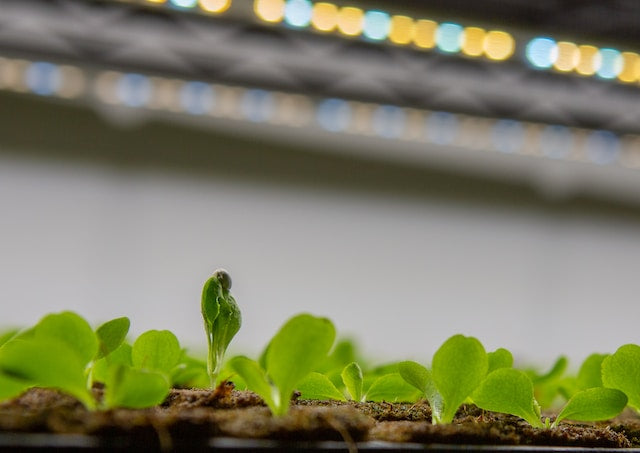Your Cart is Empty
Add description, images, menus and links to your mega menu
A column with no settings can be used as a spacer
Link to your collections, sales and even external links
Add up to five columns
Add description, images, menus and links to your mega menu
A column with no settings can be used as a spacer
Link to your collections, sales and even external links
Add up to five columns

Grow Lighting in a Nutshell
April 06, 2023 2 min read
All photos used are our own!
Grow lights are an incredibly useful tool for growing almost everything you can grow outside but can’t for the most part of the year. Plants rely on bright light to thrive, so if they’re inside, they need the extra boost. But where do you start?

LED vs Fluorescent, and why LED wins
For serious gardeners, professional grade LED has taken over from fluorescent as it uses the same energy but is twice as powerful.
For example, two 54W fluorescents can be replaced with one 48W LED. They last 5x longer, and Growtronics LEDs are engineered to create the perfect indoor grow spectrum to maximize growth without the awful purple color. All this leads to a lower operational cost, better plant health, and higher yield.

Choose your spectrum
Hundreds of manufacturers claim their lights are full spectrum, but in reality they are not. The strict definition of full spectrum would entail a spectrum that has wavelengths ranging from ultraviolet to infrared, just like natural daylight. A light source with this type of spectrum generally appears white. Those purple lights from an online retailer often contain only red and blue; last time we checked, the sun isn't purple.
Many of our competitors only supply lights with 6400K, which is a white color with high blue content. In a nutshell, these lights aren’t enhanced and don’t have enough red for optimal growth; they are typically only suitable for microgreens and baby plants. Growtronics grow lights have red (and far red, in some models) built into them and are the best for maximum plant growth.

Do lumens matter?
Your plants don't care how many lumens your light is. Lumens are how humans perceive the brightness of a light, and has nothing to do with how plants absorb light energy. Plants like energy and intensity, so it’s important to consider how much energy a light gives to your plants. This is why plain white lights aren't always the best option; they're visibly bright, sure, but do they have enough of the energy your plants need?
What happens if your plants aren't given enough energy? They sprout slower and are weaker. They can also sunburn when you take them outside, since they aren't used to the sun.

In conclusion
Simply put, Growtronics grows better, stronger plants, faster. That’s pretty much all you need to know about LED grow lighting. Lighting technology can be a rabbit hole of information. Here at growtronics we take out the guesswork and just make it simple for you.
If your plants are sitting sadly by your window wishing for more light, you will be happy you read this, and we’re happy to have helped out.
Subscribe
Sign up to get the latest on sales, new releases and more …
